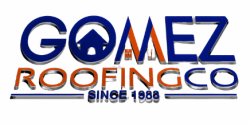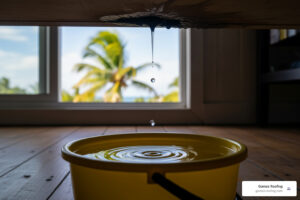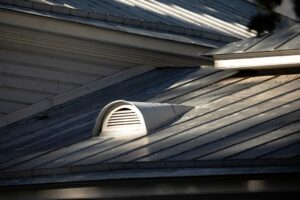Decoding Deck Installation Costs
Commercial decking cost structures hinge on both the scale of the project and the choice of materials, directly influencing budget forecasts and contractor rates. Homeowners and property managers asking “how do the pricing structures for commercial decking contractors vary by project size and materials” need clear guidance on factors, budgeting strategies, and optimization techniques. This article defines the primary cost drivers—project scale, material selection, labor and equipment needs—and illustrates how to compare materials, understand contractor pricing models, structure a robust budget, gauge timeline impacts, factor in ancillary expenses, and optimize costs without sacrificing quality. Along the way, we highlight expert workmanship and exceptional service from Gomez Roofing’s commercial decking solutions and explain why investing in a commercial deck can bolster property value and usability.
What Are the Main Factors Affecting Commercial Decking Prices?
Commercial decking prices arise from an interplay of project size, material costs, labor and equipment expenses, site requirements, and compliance fees. Project scale multiplies material volume and labor hours, while premium materials command higher unit rates and specialized installation. Equipment type, site access complexity, permitting requirements, and inspection fees further shape the overall cost. For example, a 2,000 ft² deck built with architectural-grade aluminum will incur higher upfront costs than a wood deck but reduce long-term maintenance outlays. Understanding these drivers sets the stage for accurate comparisons and informed budgeting.
Factors Affecting Commercial Decking Prices
Commercial decking prices are influenced by project size, material costs, labor, equipment expenses, site requirements, and compliance fees. Project scale increases material volume and labor hours, while premium materials have higher unit rates and require specialized installation.
This source provides an overview of the main factors that influence the cost of commercial decking projects, which is essential for understanding the overall budgeting process.
How Does Project Size Influence Commercial Decking Costs?
Project size directly scales the cost of commercial decking by increasing material quantities, labor hours, and equipment usage.
- Material Volume: Larger footprints require proportionally more decking boards, fasteners, and structural components.
- Labor Time: Crew hours grow with square footage, often triggering bulk labor rates or overtime premiums.
- Equipment Rental: Extended site equipment use, such as scissor lifts or flooring saws, adds daily rental fees.
- Logistics Complexity: Larger builds involve phased deliveries, staging zones, and traffic management.
As size grows, unit costs may marginally decrease through bulk discounts, but overall budget rises significantly, leading into material selection trade-offs.
How Project Size Influences Commercial Decking Costs
Project size directly impacts commercial decking costs by increasing material quantities, labor hours, and equipment usage. Larger decks require more materials, labor time, and equipment rental, which increases the overall cost.
This information clarifies how the scale of a project directly affects the budget, which is a key consideration for commercial projects.
Which Materials Most Affect Commercial Deck Contractor Rates?
Material selection drives both up-front and long-term pricing through varying unit costs, installation complexity, and maintenance demands.
Commercial Decking Material Costs
Material selection drives both up-front and long-term pricing through varying unit costs, installation complexity, and maintenance demands. Softwoods offer low unit prices but require frequent sealing and replacement, while tropical hardwoods command high rates for durability and aesthetic appeal.
This source highlights the impact of material choices on both initial and long-term costs, which is crucial for making informed decisions.
- Softwoods (pressure-treated pine) offer low unit prices but require frequent sealing and replacement.
- Tropical hardwoods (ipe, cumaru) command high rates for durability and aesthetic appeal.
- Composite boards integrate wood fibers and polymers, balancing moderate cost, low maintenance, and consistent performance.
- Metals (aluminum, steel) carry premium fabrication and fastening costs but deliver exceptional longevity.
Choosing the right material aligns with project goals—whether initial savings, lifecycle value, or specialized applications—and introduces labor and equipment considerations that follow.
How Do Labor and Equipment Costs Vary by Project Scale?
Labor and equipment expenses adjust proportionally with project scale due to crew size requirements, specialized machinery, and site logistics.
- Crew Composition: Large decks often require multiple specialized trades—framers, finishers, welders—each with distinct hourly rates.
- Specialized Equipment: Steel or aluminum decking may need plasma cutters, welding rigs, or extrusion tools at additional cost.
- Site Setup: Larger sites demand fencing, lighting, scaffolding, and safety monitoring, increasing overhead.
- Extended Schedules: Longer timelines can trigger union or overtime rates for labor and extended rental periods for machinery.
These dynamics reinforce the link between scale and total cost, informing effective comparisons of material and labor trade-offs.
How to Compare Commercial Decking Material Costs Effectively?
Comparing material costs requires evaluating upfront pricing, lifecycle maintenance, and performance attributes side by side. A structured table clarifies cost breakdowns and durability ratings for common decking choices.
| Material | Price Range (per ft²) | Durability Rating (1–5) |
|---|---|---|
| Pressure-Treated Wood | $2 – $5 | 2 |
| Tropical Hardwood | $5 – $30 | 5 |
| Composite | $12 – $22 | 4 |
| Aluminum | $15 – $20 | 5 |
What Are the Cost Differences Between Wood, Composite, and Metal Decking?
Wood decking typically costs between $2 and $30 per ft² based on species, maintenance, and finishing costs. Composite boards range from $12 to $22 per ft² but require minimal upkeep, while metal options start at $15 per ft² and extend to $20 per ft² for architectural grades. Factoring unit cost alongside longevity yields a fuller view of total lifecycle investment.
How Do Material Durability and Maintenance Affect Long-Term Pricing?
Durability and maintenance needs shape lifecycle cost by influencing repair frequency and upkeep budgets.
- Wear Resistance: High-density composite and metal resist wear and weathering, reducing replacement cycles.
- Maintenance Schedule: Wood decking demands annual sealing or staining, adding recurring service fees.
- Warranty Coverage: Premium materials often include extended warranties that offset future repair expenses.
- Environmental Exposure: Coastal or industrial sites accelerate corrosion or decay, raising maintenance intensity.
Prioritizing durability can lower long-term outlays, which leads to selecting best-value options for large projects.
Which Materials Offer the Best Value for Large Commercial Deck Projects?
- High-Performance Composite – Midrange price, low maintenance, 25-year warranty.
- Tropical Hardwood – Premium aesthetic, exceptional lifespan, higher installation complexity.
- Aluminum Framing + Composite Tops – Structural strength, corrosion resistance, moderate board cost.
- Engineered Wood – Sustainable profile, budget-friendly price, moderate durability.
Choosing the optimal material mix combines longevity with project-specific performance needs.
What Are Typical Commercial Deck Contractor Rates and Pricing Structures?
Commercial decking contractors employ various pricing approaches—unit rates, fixed bids, cost-plus agreements—to align risk, profit, and client expectations. Recognizing these models helps clients interpret quotes and negotiate terms effectively.
How Do Contractors Calculate Rates for Large-Scale Deck Installations?
Contractors calculate large-scale decking rates by combining unit pricing, crew labor estimates, overhead allocations, and profit margins.
- Unit Cost: Material price per square foot multiplied by project area.
- Labor Estimate: Total crew hours multiplied by hourly labor rates.
- Overhead Allocation: Proportional share of office, insurance, permit, and equipment costs.
- Profit Margin: Markup percentage applied to material, labor, and overhead sum.
Transparent rate structures enable accurate budgeting and fair vendor comparisons.
What Pricing Models Do Commercial Decking Contractors Use?
| Model | Definition | Benefit |
|---|---|---|
| Fixed-Price | Single comprehensive bid covering all scopes | Predictable total cost |
| Cost-Plus | Actual costs plus agreed markup | Transparent cost breakdown and lower risk for changes |
| Time-and-Materials | Labor and materials billed at standard rates | Flexibility to accommodate scope adjustments |
Each model balances client control and contractor risk differently.
How Can Clients Negotiate or Understand Contractor Quotes?
- Ask for Breakdown: Ensure material, labor, overhead, and profit are separately listed.
- Compare Multiple Quotes: Solicit at least three bids to gauge market rates.
- Define Change Orders: Establish procedures and rates for project adjustments.
- Confirm Inclusions: Verify permit, inspection, and cleanup services are accounted for.
Clear communication reduces hidden charges and fosters trust in the contractor relationship.
How to Budget for Large Commercial Deck Projects?
A robust budget integrates material selections, labor forecasts, contingency allowances, and permit fees to safeguard against overruns and delays.
What Are the Key Budgeting Considerations for Large Deck Installations?
- Material Premiums: Budget higher for specialty boards or steel framing.
- Contingency Reserve: Allocate 10–15% for unexpected changes.
- Permit and Inspection Fees: Include municipal charges and certificate costs.
- Site Preparation: Factor in grading, drainage, and erosion control.
Prioritizing these elements secures financial readiness for complex installations.
How Does Project Size Affect Contingency and Overhead Costs?
- Contingency Scaling: Larger scopes often warrant 15–20% reserves.
- Management Overhead: Site supervision and project management fees rise with complexity.
- Insurance Premiums: Broader liability coverage and performance bonds may be required.
These adjustments keep finances aligned with project risk.
What Are Common Cost Overruns and How to Avoid Them?
- Change Orders: Tighten design approvals before construction.
- Site Conditions: Conduct thorough surveys and geotechnical assessments.
- Weather Impacts: Build seasonal buffers into the schedule.
- Supply Disruptions: Lock in material contracts early and explore alternative vendors.
Proactive planning minimizes budget shocks and scheduling conflicts.
How Do Project Size and Materials Impact the Overall Commercial Deck Installation Timeline?
Project scale and material choice jointly determine lead times, staging requirements, and completion duration.
Why Does Larger Project Size Extend Installation Duration?
- Labor Scheduling: Multiple crews operate in sequence—framing, finishing, inspection.
- Material Staging: Bulk deliveries demand on-site storage and handling.
- Phased Construction: Sectional builds necessitate multiple inspection cycles.
- Permitting Delays: Municipal reviews can stagger large installations.
Understanding duration effects informs realistic project plans.
How Do Material Choices Affect Installation Speed and Costs?
- Wood Decking: Straightforward cuts and nailing speed up framing.
- Composite Boards: Often require specialized fasteners and pre-drilling.
- Metal Framing: Welding or bolting takes additional setup time.
- Pre-Fabricated Panels: Reduce field labor but increase lead time.
Balancing material properties with schedule needs optimizes total project time.
What Are Additional Costs to Consider Beyond Materials and Size?
Beyond core materials and scale, projects incur expenses for compliance, customization, and specialized site work.
How Do Permits, Inspections, and Site Preparation Influence Pricing?
- Permit Fees: Municipal charges vary by deck area and use classification.
- Inspection Scheduling: Re-inspections after corrections may incur extra fees.
- Grading and Drainage: Excavation, soil stabilization, and runoff controls raise costs.
- Debris Removal: Waste disposal and recycling services contribute to project expenses.
Accounting for these items ensures total cost transparency.
What Role Do Design Complexity and Custom Features Play in Pricing?
- Custom Railings: Intricate metalwork or glass infill systems demand skilled labor.
- Integrated Lighting: Electrical planning and installation increase permits and wire costs.
- Curved Layouts: Non-standard board shapes require advanced cutting and planning.
- Accessibility Features: Compliance with ADA or safety standards can add structural components.
Unique design aspirations translate into tailored budgets and skilled contractor involvement.
How Can You Optimize Commercial Decking Costs Without Sacrificing Quality?
Optimizing costs involves selecting value-driven materials, streamlining planning, and investing strategically where durability matters.
What Are Cost-Effective Material Alternatives for Commercial Decks?
Alternative decking materials like pressure-treated lumber and aluminum-plastic composites provide cost savings with adequate performance.
- Pressure-Treated Wood: Low material cost, moderate lifespan with periodic maintenance.
- Aluminum Composite Panels: Lightweight, corrosion-resistant, minimal upkeep.
- Capstock Composite: Polymer-coated boards resist staining and fading at modest premiums.
These options reduce upfront spending while preserving functional longevity.
How Can Efficient Project Planning Reduce Contractor Rates?
- Finalize Design Early – Limit revisions after bids are established.
- Order Materials in Bulk – Leverage volume discounts and reduce freight fees.
- Coordinate Trades – Align framing, finishing, and inspection schedules to prevent downtime.
- Define Scope Clearly – Eliminate ambiguity that triggers extra labor or material allowances.
Strategic management secures lower overall contractor charges.
When Is It Worth Investing More for Higher-Quality Materials?
Investing in premium decking pays off in high-traffic or corrosive environments where long-term durability outweighs upfront costs.
- Coastal Properties: Salt air accelerates wood decay and metal corrosion.
- Public Plazas: Heavy foot traffic demands resilient, slip-resistant surfaces.
- Corporate Entrances: Brand image and reduced maintenance align with premium finishes.
- Safety-Critical Areas: Fire-rated or structural steel decks ensure compliance and longevity.
Here, higher investment avoids frequent replacements and service interruptions.
Gomez Roofing’s commitment to expert workmanship and exceptional service extends to our commercial decking offerings, ensuring your investment delivers lasting performance and value. Explore why investing in a commercial deck is a strategic business decision and learn more about our tailored solutions at “Why Getting a Commercial Deck Is a Smart Investment for Your Business Plan.”
For comprehensive property protection beyond decks, visit Gomez Roofing’s full suite of services at Gomez Roofing – Dependable Roofing and Solar Solutions.
Commercial decking budgets align with both macro-scale factors and micro-level material choices; mastering that balance leads to projects delivered on time, within budget, and with enduring quality. Contact our team to tailor a decking solution that meets your scope, performance expectations, and financial goals.




